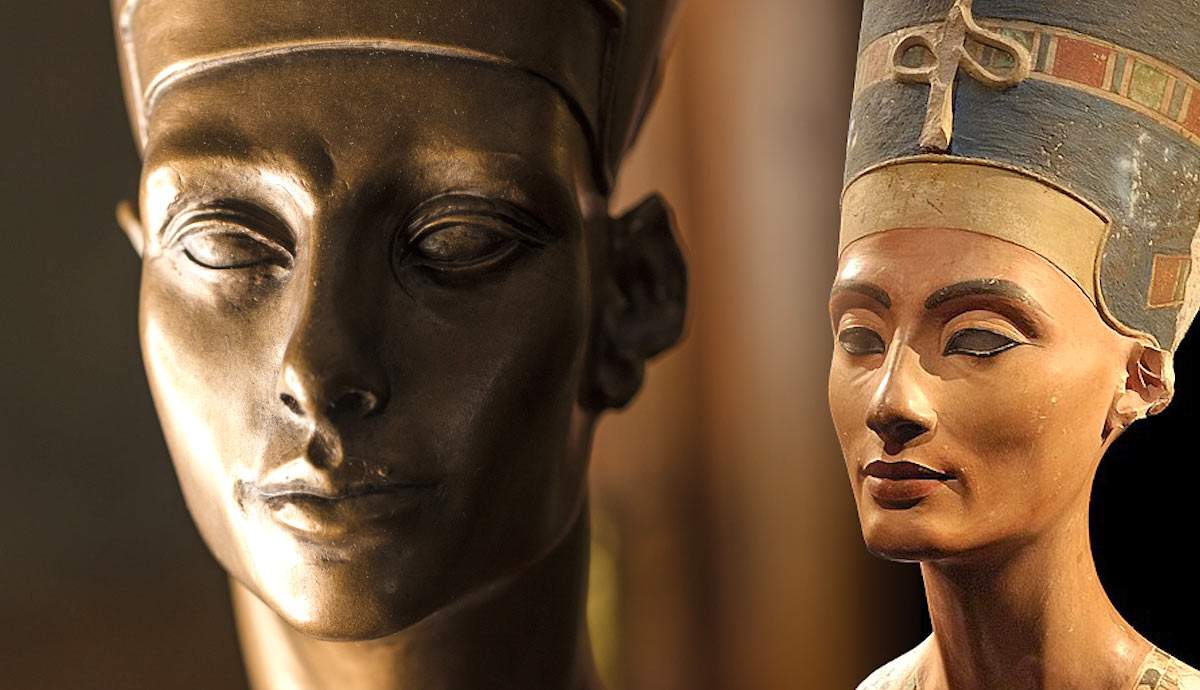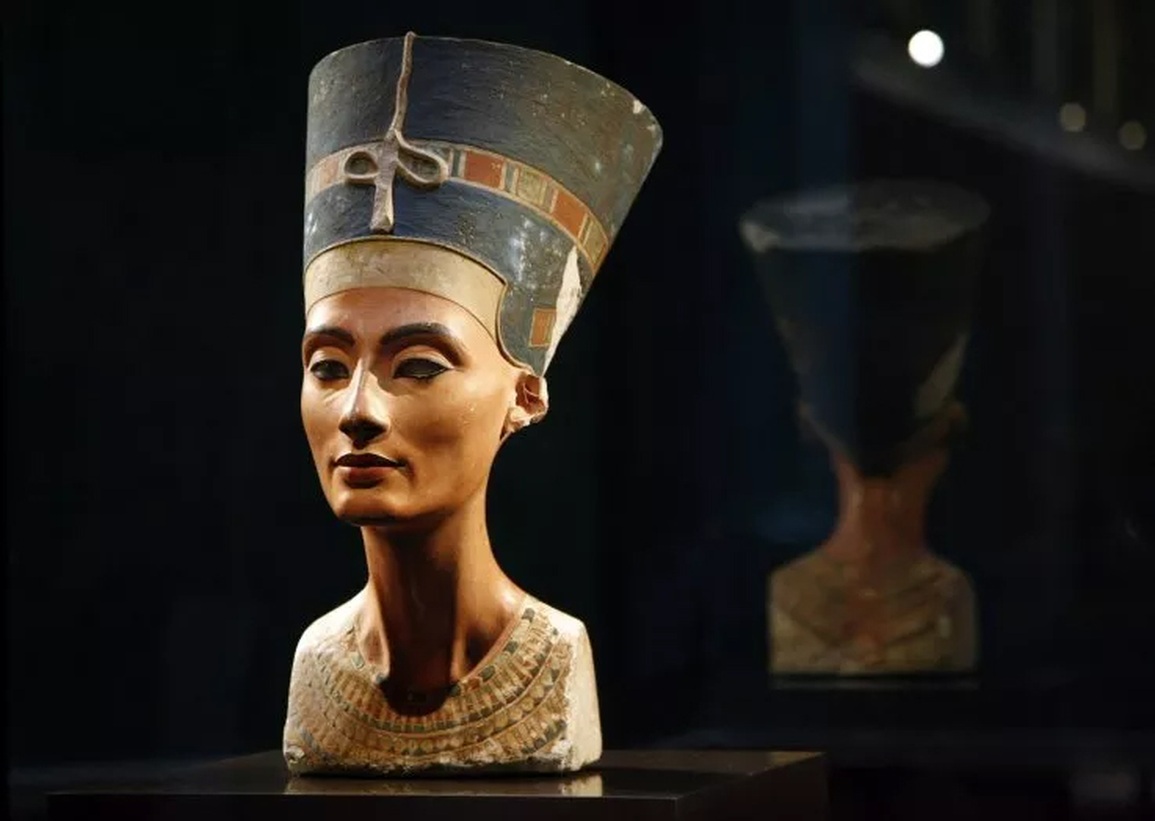Neferneferuaten Nefertiti was a queen of the 18th dynasty of Ancient Egypt, wife of Pharaoh Akhenaten. Nefertiti and her husband are famous for their religious revolution, in which they worshiped only one god, Aten. The period when Pharaoh Akhenaten ruled the country was said to be the richest period of ancient Egyptian history. Some scholars believe that Nefertiti reigned briefly as Neferneferuaten after her husband’s death and this is a matter still debated. If Nefertiti ever ruled as Pharaoh, her reign was marked by the fall of Amarna and the relocation of the capital back to Thebes, Egypt.

Nefertiti is very famous thanks to her bust currently displayed in the Neues museum in Berlin, Germany. The bust of Queen Nefertiti is considered one of the most famous works of art of Ancient Egypt, a prime example of ancient art and thanks to this statue, Nefertiti has been called the woman the most beautiful in the world. The statue has “hypnotized” everyone since it was displayed in 1923. The statue gives insight into the mysterious queen and continues to cause controversy and debate in art and politics.

The bust of Queen Nefertiti is about 48 cm tall and weighs 20 kg. The statue is very delicate, elegant and very symmetrical. The statue was carved around 1340 BC during the Amarna period. It is believed to be the work of the sculptor Thutmose because it was found in his workshop. The statue is identified as Nefertiti by her signature blue crown with a king cobra. The core of the statue is limestone covered with plaster.
Archaeologists don’t have too much information about Nefertiti, whose name means “beauty has appeared”. One theory is that she was a Syrian princess whose husband, Pharaoh Akhenaton, was famous for overhauling Egyptian religion – converting it from polytheism to monotheism centered on the sun god Aten. He also moved the Egyptian capital from Thebes to a new location at Amarna. Nefertiti is said to have married at age 15, before Akhenaten ascended the throne. She had six daughters and in works of art, Nefertiti is shown as equal to the king, as a co-ruler of the country, as opposed to the traditional role of queen.
The bust of Nefertiti was found on December 6, 1912 at Amarna, a large Egyptian archaeological site, by a German company headed by German archaeologist Ludwig Borchardt. It was found in the workshop of the sculptor Thutmose along with other unfinished busts of Nefertiti.
What makes this piece unique is that the statue does not appear to have been intended for a tomb – like many other Egyptian works of art. This is a model, a sample statue to use for other works of art. Egyptian sculptors almost never tried to show any facial emotions in their works of art but the face of this statue is the embodiment of serenity and calmness. Apart from the damaged left eye and ear, the statue was discovered in excellent condition.
When the bust was first found, the left eye of the statue did not have a quartz representing the iris like the other eye, and although archaeologists searched carefully, they could not find it. the left iris of the statue. The missing eye has led to speculation that Nefertiti may have suffered an eye infection and lost her left eye. However, the presence of full irises in her other statues contradicts this possibility.
The statue of Nefertiti has been present in Germany since 1913 and was displayed at the residence of Simon – a businessman – the sponsor of the Amarna excavation. The statue was donated to the Egyptian Museum of Berlin in 1920. In 1923, the statue was introduced to the public as an important work of the Egyptian Museum in Berlin, Germany. The flawless statue quickly became a world-famous symbol of feminine beauty and is one of the most famous surviving artifacts from ancient Egypt. Hitler once described the bust as a unique masterpiece, an ornament, a real treasure and pledged to build a museum to house it.
The statue was returned to the Neues museum in Germany when the museum reopened in October 2009 and for many years the Egyptian authorities have been asking Germany to return this beautiful bust to Egypt. .
The mystery surrounding the statue of Nefertiti is one of the reasons why Nefertiti’s life is so fascinating and captivating. This statue has been admired, studied and copied a lot. The ongoing debates about Nefertiti show how she has always been a figure of great historical interest and how art plays an important role in promoting these discussions.





